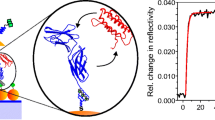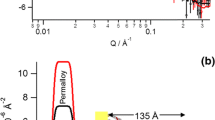Abstract.
Two different types of ω-substituted alkanethiol/disulfide compounds have been used to prepare monolayer architectures on gold serving as platforms for the immobilization of receptor probe molecules – antibodies. These are: (i) carboxylic acid alkanethiols post-reacted with amino biotin to generate streptavidin surfaces, and (ii) N-hydroxysuccinimide-terminated disulfide surfaces. The properties of the monolayers, with and without attached receptor probe molecules, were analysed using infrared spectroscopy, ellipsometry, fluorescence scanning and atomic force microscopy. Several experimental parameters, such as condensation reagents, additives, probe and target concentrations and immobilization time, were systematically varied to determine the dynamic range and to optimize the sensitivity and signal-to-noise ratio of the biochip platforms. Fluorescence screening using Cy5-labelled antigens finally demonstrated that both surfaces could be successfully employed to immobilize the antibodies. The pros and cons of the two approaches are also discussed.
Similar content being viewed by others
Author information
Authors and Affiliations
Corresponding author
Additional information
Received November 15, 2002; accepted March 25, 2003 Published online July 28, 2003
Rights and permissions
About this article
Cite this article
Schäferling, M., Riepl, M., Pavlickova, P. et al. Functionalized Self-Assembled Monolayers on Gold as Binding Matrices for the Screening of Antibody-Antigen Interactions. Microchim. Acta 142, 193–203 (2003). https://doi.org/10.1007/s00604-003-0018-0
Issue Date:
DOI: https://doi.org/10.1007/s00604-003-0018-0




